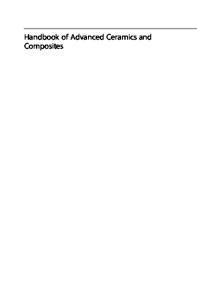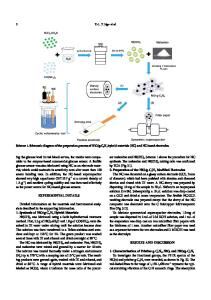Hybrid SWCNT - NiO Composites for Supercapacitor Applications
- PDF / 9,257,959 Bytes
- 7 Pages / 612 x 792 pts (letter) Page_size
- 43 Downloads / 471 Views
Hybrid SWCNT - NiO Composites for Supercapacitor Applications Jeffrey R.Alston1, Dylan Brokaw1, Colton Overson1, Thomas A. Schmedake1, and Jordan C. Poler1 1
University of North Carolina at Charlotte, 9201 University City Blvd., Charlotte, NC 28223, U.S.A ABSTRACT Supercapacitor devices promise to be an effective means of storing energy, and delivering power for personal electronics, remote sensors, and transportation.1, 2 Rare earth metals, such as ruthenium, have been used and report high value of capacitance, specific power, and energy.4 Nevertheless, the rarity of such metals prevent their practical use. In this study we utilize an earth-abundant nickel and a controlled microwave synthesis to create nickel oxide (NiO) with an optimal nanostructure for capacitance. To surpass the lofty series resistance associated with metal oxides such as NiO, we exploit the conductive properties of single and multi-walled carbon nanotubes. The carbon nanotubes and NiO can benefit from the presence of each other by preventing unnecessary aggregation. INTRODUCTION As we become more efficient in harnessing sources of renewable energy, there needs to be more effective ways of storing and using that energy. With current technologies, there are limits on the energy, power, and stability of the devices we can create. Batteries represent one end of the spectrum with energy densities as high as 950 mAh g-1 for low-dimension nanostructured materials, but have low power densities. At the other extreme are capacitors, with high power densities, around 110 kW kg-1, but low energy densities compared to batteries.5 To utilize the best of both extremes, supercapacitors are being developed, which are capable of having both a high power and high energy density. This can be achieved by combining both electric double layer capacitance (EDLC) and pseudocapacitance mechanisms. EDLC is created by the physical storage of charge between an electrode and an ionic layer formed in an electrolyte. Pseudocapacitance is described by an assortment of chemical processes, including charge transfer reactions at the electrode, intercalation of ions through a structure, or adsorption at the electrode surface. The effects of both types of these capacitances can be increased by the judicious choice of materials used, and by manipulating the morphology of the materials through directed assembly. As indicated by points 1 and 2 on the Ragone plot in Figure 1, the characteristics of these types of capacitances are shown. The use of nanomaterials in supercapacitor devices shows promise; however, independently each of these materials have their own setbacks. Metal oxides have interesting pseudocapacitive properties, but have a high internal resistance, which leads to the relatively low power density. SWCNTs show significant EDLC and are capable of having a high power density, but are limited by their tendency to aggregate together and greatly reducing their respected high surface area and thus EDLC. We find that the benefits of combining both of these capacitances and in
Data Loading...











